It's been a few months since we covered Arms Race Clarity, a nootropic that's focused on zen-like mood. Furthering the incredibly unique lineup of fitness influencer Julian Smith, the team at Arms Race Nutrition has launched their take on an immune system boosting greens supplement, the aptly-named Arms Race Immunity Greens.
Arms Race Nutrition Immunity Greens
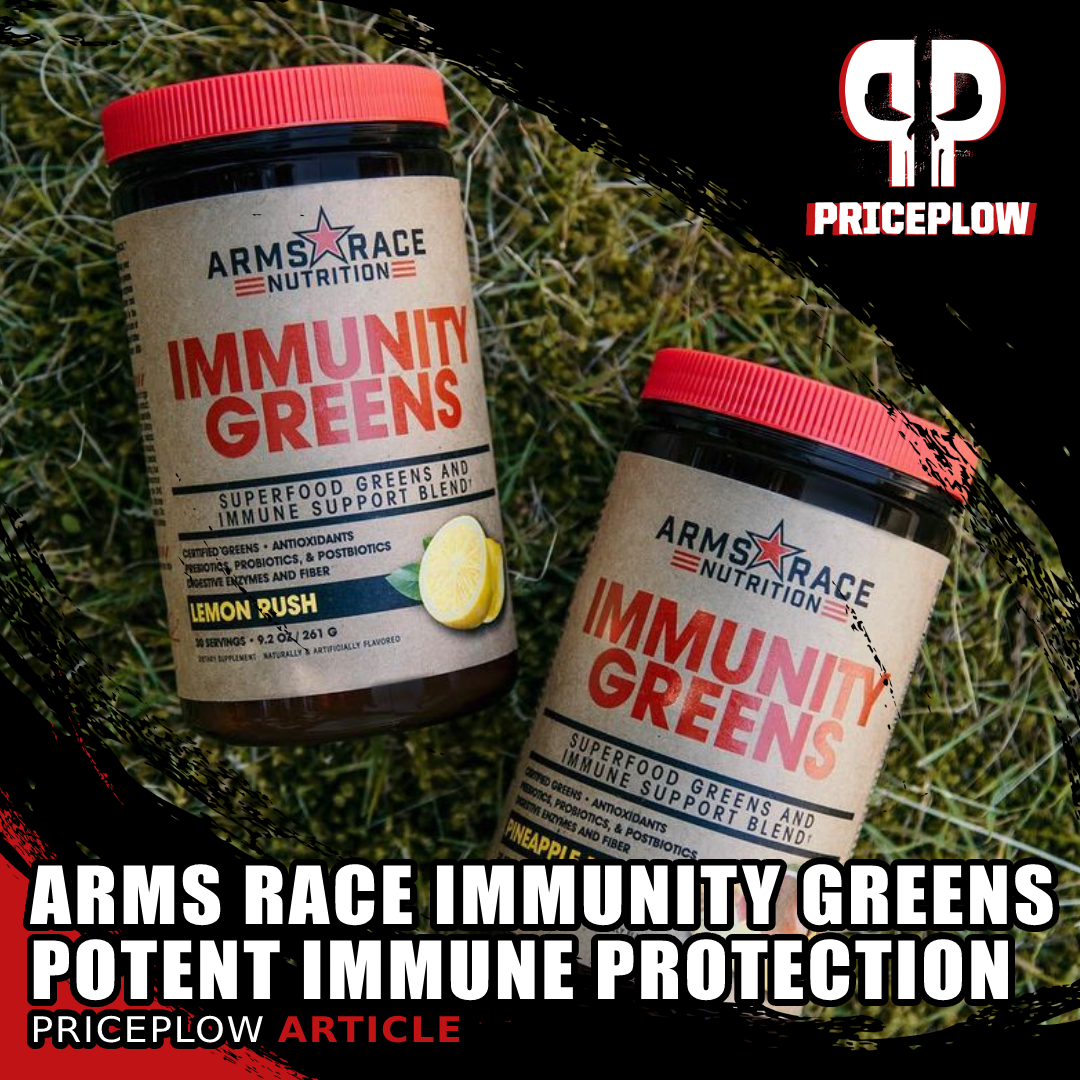
Looking for a vastly different kind of Greens Powder that has real immune-boosting ingredients? Arms Race Immunity Greens may be what's on tap this fall/winter!
There's no other way to put it - this greens supplement is different. And if you're looking for immunity, this could be the one.
Immunity Greens ditches the standard spirulina and wheatgrass style greens supplement, instead opting for vegetables and key immune system boosting ingredients such as EpiCor and elderberry, fronted by psyllium husk fiber rather than the usual inulin prebiotic we've been seeing. Natural vitamin and mineral sources are included, but there are also high-quality, chelated minerals like zinc and copper included too. Probiotics and digestive enzymes are added for good measure as well.
A different kind of greens formula
Basically every decision made here is different from what we've seen with other greens supplements, so if you're looking for something different, read on. But first, take a look at PricePlow's Arms Race Nutrition news alerts, we still have more to catch up on with team ARN:
Arms Race Nutrition Immunity Greens – Deals and Price Drop Alerts
Get Price Alerts
No spam, no scams.
Disclosure: PricePlow relies on pricing from stores with which we have a business relationship. We work hard to keep pricing current, but you may find a better offer.
Posts are sponsored in part by the retailers and/or brands listed on this page.
This area is reserved for Team PricePlow's upcoming Ingredients video.
Subscribe to our channel and sign up for notifications so you catch it when it goes live!
Arms Race Immunity Greens Ingredients
Be prepared for a vastly different kind of greens supplement here. Arms Race isn't going with your standard "spirulina, chlorella, and wheatgrass" greens powder supplement here, so if you're looking for something unique, this could easily be the one. The fiber source is different, and there are a few well-researched immunity ingredients as well.
-
Psyllium Husk 85% (husk) - 2400 mg
Psyllium Husk Powder is a form of fiber that's been used supplementally for a very long time, but we don't see it as often in greens powders. This fiber comes from the husks of Plantago ovata plant seeds. Arms Race uses it as a big change-up because it can help absorb water in the gut, making for far easier bowel movements,[1] which is why it's such a popular fiber supplement.
Even better, psyllium husk also works as a prebiotic, feeding the gut's healthy probiotics to keep them thriving.[2] This is useful because we also have a solid probiotic blend in Immunity Greens, and will look at the connection between gut health and immune system function below.
Further, higher-dosed psyllium husk extract has been shown to reduce HbA1c and blood sugar levels,[3] which we believe has implications towards improved insulin sensitivity and better immunity.
If the inulin / chicory root based greens powders aren't working for you and your gut, it's worth trying what Arms Race is offering here, given the completely different base than we're used to seeing lately.
-
TruServ - 2000 mg
TruServ is a blend of vegetables with key antioxidants that are built to provide a true serving of vegetables included. For Immunity Greens, Arms Race Nutrition chose to use the following popular vegetables to make their serving of veggies:
- Organic Kale
- Organic Broccoli
- Organic Spinach
This blend gives key antioxidants to help fight free radicals and enhance overall immune system function by providing the body what it needs to prevent dangerous "free radical cascades" from getting out of control.
On top of the antioxidants provided, kale is known as a "superfood" that has been memed into popularity, but most don't know about its gut protection capabilities.[4] Broccoli is of course the cruciferous vegetable with various phytochemicals, vitamins, and minerals well-known for supporting the immune system.[5] Spinach is often used for its nitrate content,[6] which can assist with the cardiovascular system.
It's worth noting that we don't know exactly what's extracted in these vegetables, but TruServ is meant to provide real servings, and not just cheap fibrous filler.
-
EpiCor (dried yeast fermentate) (from Saccharomyces cerevisiae) - 500 mg
EpiCor is a unique immune-boosting ingredient that we often call the "multi-vitamin" for the immune system, although it's not actually a vitamin - it's from yeast!
To be more specific , EpiCor comes from saccharomyces cerevisiae, which you may simply know as Baker's yeast or Brewer's yeast. While it's great for fermentation, what scientists have discovered is that its constituents of vitamins, polyphenols, beta-glucans, fibers, and amino acids can greatly improve immune system function![8]
There have been several studies on humans to back it up as well:
Human Clinical Trials on EpiCor
500 milligrams of EpiCor taken daily has been demonstrated to bring the following benefits in humans:
- Reduce symptoms of allergies.[7]
- Increase levels of secretory immunoglobulin A (SIgA).[9]
- Decrease serum Immunoglobulin E.[9]
- Reduce the duration and frequency of upper respiratory tract infections.[10,11]
- Quickly boost natural killer (NK) cell activity.[12]
- Provide added antioxidant protection.[12]
- Reduce gastrointestinal discomfort.[13]
- Function as a prebiotic, increasing healthy gut bacteria.[13,14]
- Reduce histamine-induced inflammation.[15]
While the ingredient has been out for quite some time, it gained a newfound respect in 2020 and continues to be popular in new immunity formulations since then. EpiCor is also gluten free, GMO free, and made in a cGMP-certified facility in the U.S.[8]
The above studies were done using the same dosage as we have here in Arms Race Immunity Greens, so get a serving in daily!
-
Phyto-C - 150 mg
Phyto-C is a standardized plant-based blend that uses the following 11 "superfoods" to provide a natural spectrum of vitamin C and its counterpart polyphenols:
- Acerola juice concentrate
- Strawberry
- Green coffee bean extract
- Green tea extract
- Maqui
- Acai
- Silica
- Turmeric extract
- Blueberry
- Broccoli
- Kale
- Tart cherry
While added Vitamin C is also in Immunity Greens, we argue that it's better to get natural sources when you can also get their supporting ingredients that our bodies are used to seeing (and using) together in food.
A dose of Phyto-C provides 20% RDI Vitamin C and 15% polyphenols. In general, it's well-known that Vitamin C can help regulate immune health through free radical scavenging and enzymes regulation for hormones and other critically important biochemical processes.[16]
-
Eldermune (Elderberry Juice Concentrate Sambucus L. (fruit) (65:1) Contains >3.0% Polyphenols) - 100 mg
Elderberry, also known as European Elder or scientifically as Sambucus Nigra, is a medicinal herb that's long been used to treat several types of medical problems, ranging from infections, inflammation, pain, and more.[17] Inside, there are several constituents that carry out numerous functions.
One of the most well-known benefits of elderberry is that it has been help in the treatment of sinusitis, bronchitis, and influenza (the flu).[18] It's important to get the fruit extract, however, since the bark, flowers, and stem could be hazardous[17] -- this is why Arms Race chose Eldermune for Immunity Greens. What's great about Eldermune is that it uses a very high concentration ratio -- 65:1 -- so that it takes 65 grams of pure elderberry fruit to make just 1 gram of this concentrate![19]
Research has shown that elderberries can significantly decrease the symptoms and duration of both the flu and the cold, and it does this by assisting with increased antibody production and cytokine secretion after exposure to the pathogen, yielding greater immune system activity.[17] This leads to potent antiviral and immunostimulatory effects on top of the antioxidant and anti-inflammatory benefits.[17,18]
We often see this ingredient in children's syrups, but don't let that fool you - when properly extracted, Elderberry is a powerful immune system supplement ingredient.
-
Digestive Enzyme Blend - 100 mg
To improve digestion throughout the day, Arms Race Immunity Greens has a blend of four different digestive enzymes:
- Amylase, to break down starches (carbohydrates)
- Lactase, to break down lactose (milk sugars)
- Proteases, to break down protein
- Lipase, to break down lipids (dietary fats)
After all, if you can't break down your food and supplements and absorb them effectively, you're not going to be optimally performing.
-
Probiotic Blend - 5 Billion CFU
Immunity Greens includes a broad spectrum of the following probiotic strains:
- Lactobacillus acidophilus
- Lactobacillus casei
- Lactobacillus salivarius
- Lactobacillus plantarum
- Lactobacillus rhamnosus
- Lactobacillus brevis
- Bifidobacterium bifidum
- Streptococcus thermophilus
- Bifidobacterium lactis
- Bifidobacterium longum
- FOS (Fructooligosaccharides)
Most greens powders don't include probiotics, yet another thing Arms Race is doing differently here.
In general, probiotics are a "live microbial feed supplement which beneficially affects the host animal by improving its intestinal microbial balance."[20] They're found in several healthy fermented foods (that we don't always eat enough of), such as sauerkraut, yogurt, and kimchi.[20] In general, probiotics are often used to support treatment for issues such as IBS, allergies, gastroenteritis, nasal pathogens, and diarrhea.[21]
However, in terms of immunity, we look at the gut health + immune connection, and with various probiotic strains, we see not only better gut function, but improved immune system operation and even reduced seasonal allergies![22-24]
A recent study has even shown that probiotic use can even have mental health stabilizing, anti-anxiety effects,[25] which may stack incredibly well with Arms Race Clarity.
We've heard much about the gut-brain-mood axis, and the same should apply to immunity. When the gut's not working well, basically nothing is working well, so fuel your system with the ingredients it needs to operate at its best.
-
Added Vitamins and Minerals
On top of the Vitamin C we've already discussed (for a total of 500 mg at 555% DV), Arms Race Nutrition has also included four other immune-boosting vitamins and minerals:
-
Vitamin D3 (as Cholecalciferol) - 125 mcg (625% DV)
Sunshine is always best, but if you're not getting tons of sun, be sure to supplement some extra Vitamin D3, which can reduce the chance of catching the flu by up to 40%[26] while warding off respiratory tract infections.[27] This is, of course, on top of numerous other cardiovascular and cognitive benefits provided by the incredible hormone.
-
Zinc (as TRAACS Zinc Bisglycinate Chelate) - 30 mg (272% DV)
It's tough to overstate the importance of zinc, especially the incredibly well-absorbed zinc bisglycinate. It's extraordinarily well-known to reduce common cold symptoms, with a plethora of research backing its use for that purpose.[28-38]
In addition, we've seen a very strong correlation between zinc status and successful recovery from novel coronaviruses of concern,[39-41] especially when used with other antiviral drugs in early treatment,[42,43] and even some good success when used in late treatment.[44,45]
Just like Vitamin D3, there are plenty of other benefits aside from immunicity, ranging from mood and cognitive improvements to testosterone support to better glucose levels and insulin sensitivity. Point being, there's zero excuse not to get your zinc in -- and get it from a high-quality source like this one.
-
Selenium (as Albion Selenium Glycinate) - 55 mcg (100% DV)
Selenium has also gotten a lot of attention lately, with a 2013 review noting that it improves immune function via promotion of T cell growth.[46] Like zinc, better selenium status is associated with a better ability to fight viral and nonviral infections.[46]
Interestingly, we don't fully understand the mechanisms, but we know that we don't always eat enough foods that are high in the mineral, so it's great to see a high-bioavailability chelated form to supplement here.
-
Copper (as TRAACS Copper Bisglycinate Chelate) - 3 mg (333% DV)
Copper is critical for the production of hemoglobin, the protein that helps red blood cells transport oxygen in the body. The mineral has demonstrated effects helping the immune system restore T cells in copper-deficient mice.[47]
-
Flavors Available
Immunity Greens launched in two flavors, but keep an eye on the list below in case there are updates:
Arms Race Immunity Greens Do it Different
Many greens powders talk about immunity, but don't use actual research-backed immunity ingredients. While we believe in the idea that "meat is food, plants are medicine", we love to see ingredients that were studied for this targeted purpose. Adding EpiCor and Eldermune to a greens powder is enough on its own, but Arms Race goes even further by approaching the gut health axis as well.
The wheatgrass and spirulina supplements out there are great, but if you're looking for a left turn and some key added ingredients, Immunity Greens is a very unique play. This is especially true with the usage of psyllium husk as the base ingredient.
The combination of Arms Race Clarity and Immunity Greens could be one of the most unique and underrated mental and physical support supplement stacks there are. If you're getting ready for a nasty flu season, which we're likely to have, this is a great supplement to a metabolically healthy diet.
Arms Race Nutrition Immunity Greens – Deals and Price Drop Alerts
Get Price Alerts
No spam, no scams.
Disclosure: PricePlow relies on pricing from stores with which we have a business relationship. We work hard to keep pricing current, but you may find a better offer.
Posts are sponsored in part by the retailers and/or brands listed on this page.
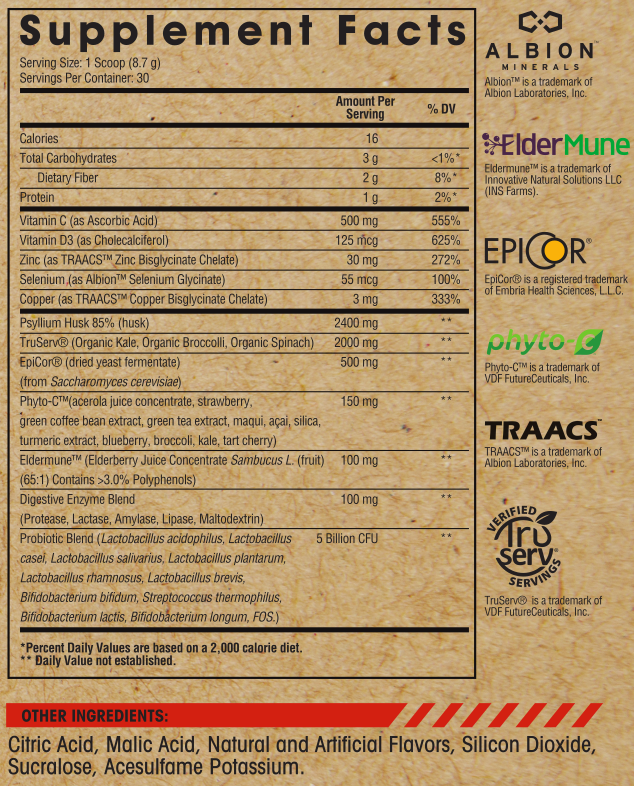


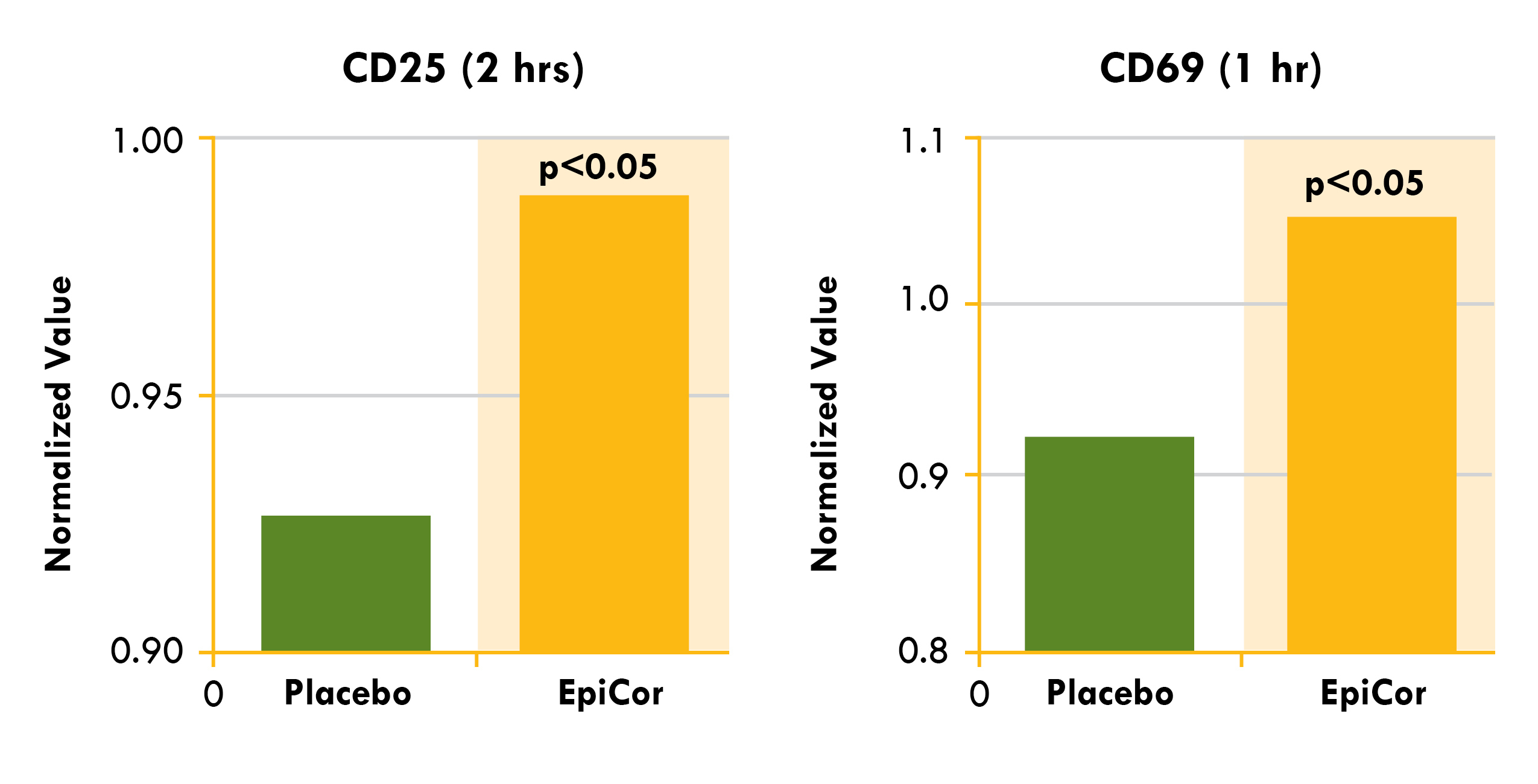
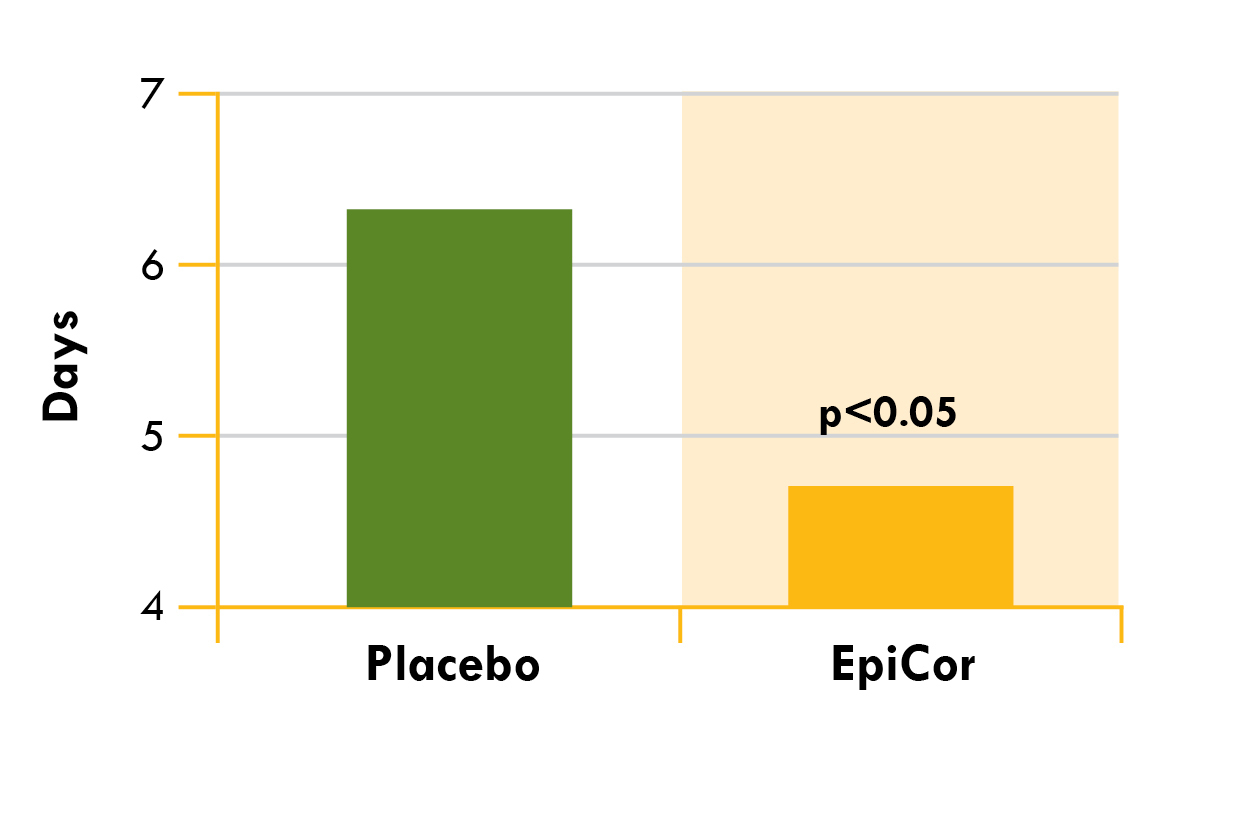

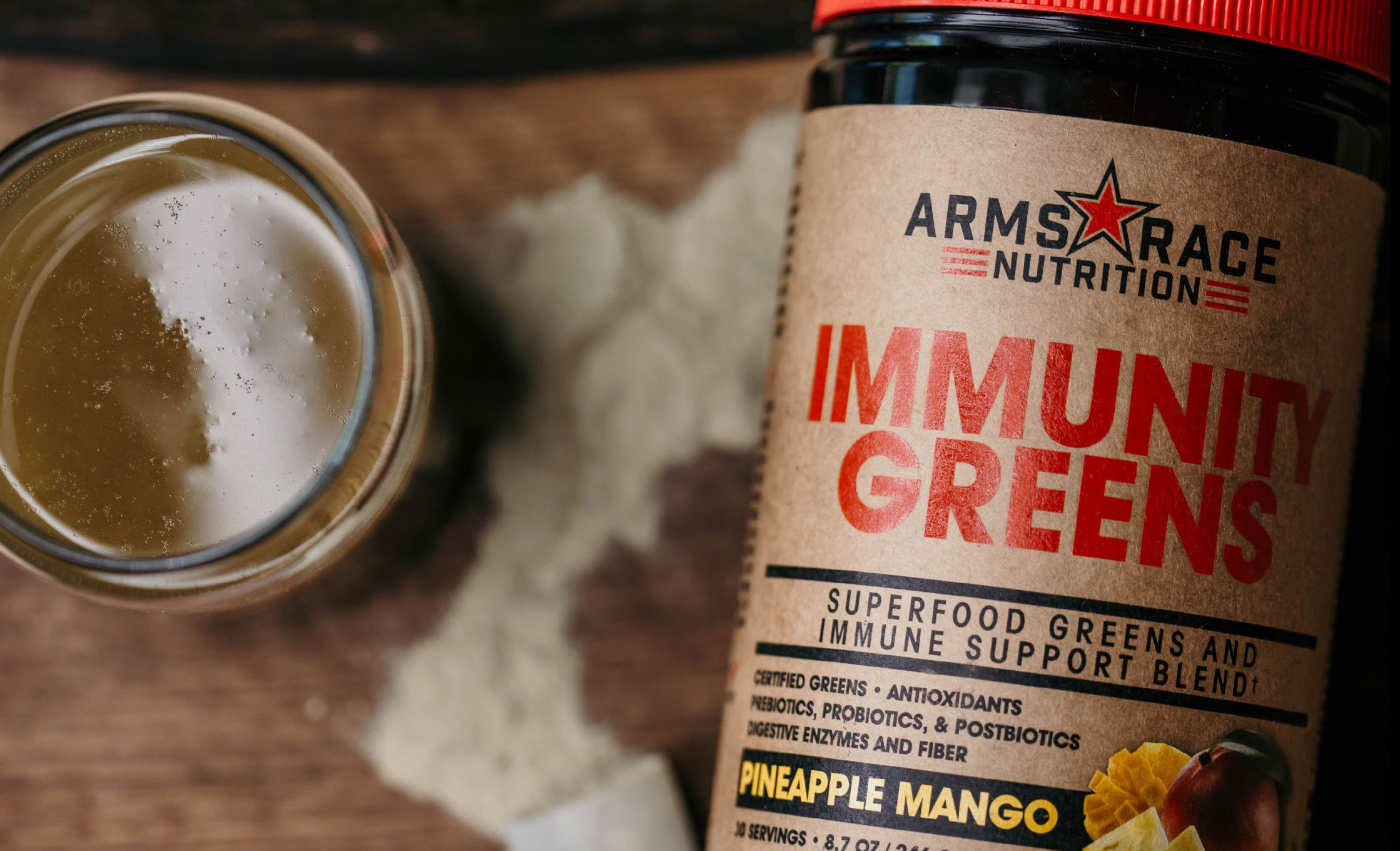

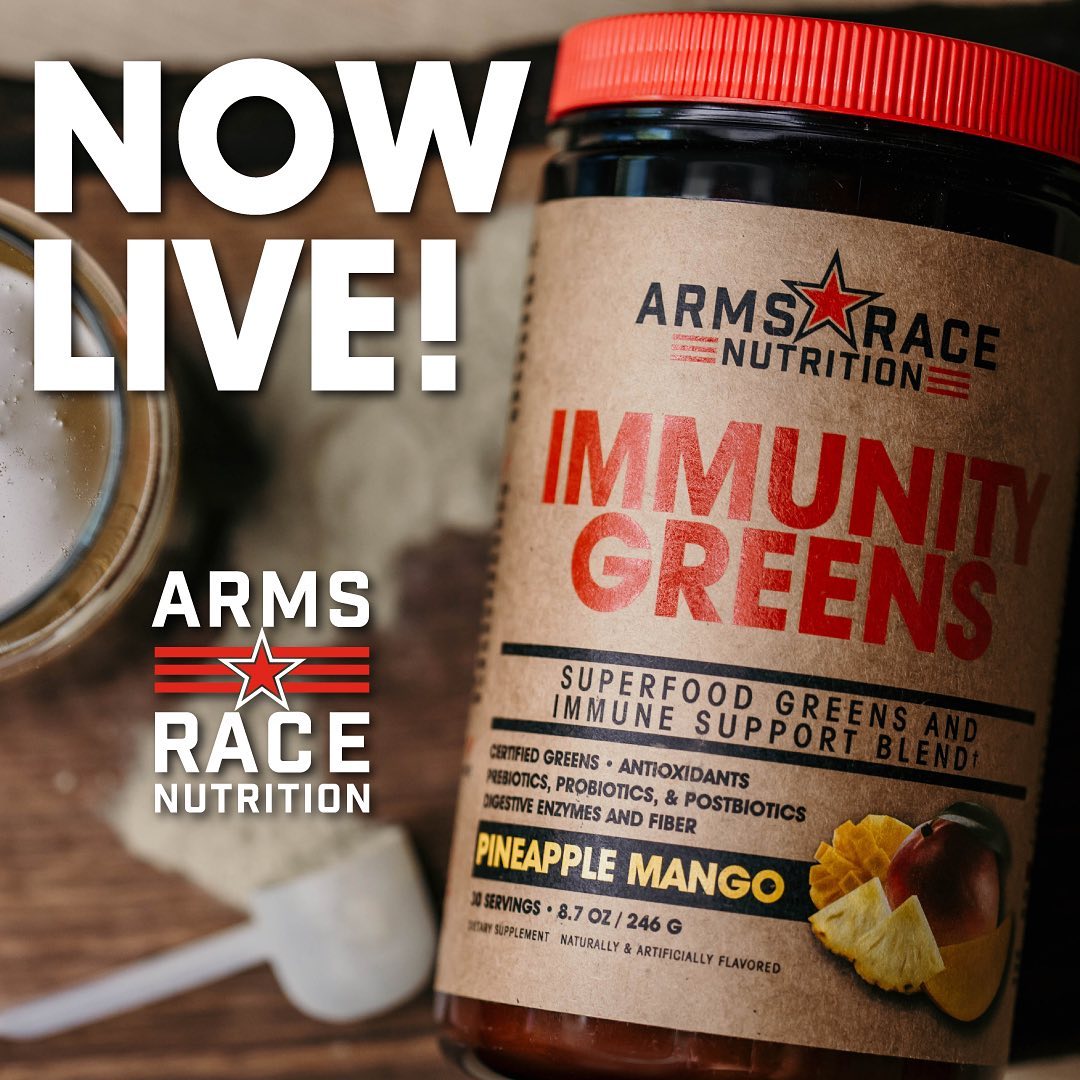



Comments and Discussion (Powered by the PricePlow Forum)